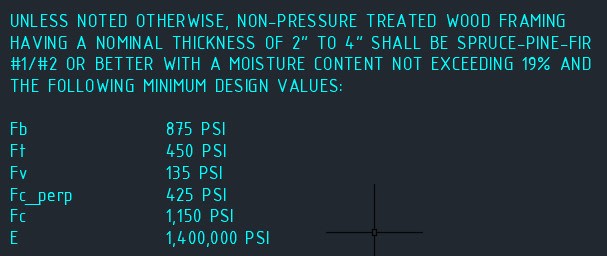FrankWoeste
Structural
Due to additional grade-marked products entering the U.S. from other countries over the past 20 years, a simple specification such as No.2 KD-19 XYZ-species may no longer clearly communicate to other parties what products and design values were assumed and used by the RDP in their design work and thus required for the project. For example, see 2024 NDS Supplement Table 4G starting on p. 63 for lumber made in the U.S. and around the World at the AWC website: The authors suggest a more robust specification as published in the Structure Magazine: Your comments are valuable and greatly appreciated.


